You are here: American University Learning Communities University College AU Cornerstone Abroad Hannah Tverberg
Contact Us
Contact:
Cornerstone Team
Hannah Tverberg
December 4, 2023:
It is hard to believe how fast this semester has gone, I can’t believe this is my last blog! This month, I want to take the time to share some of my last adventures, what Christmas is like in Madrid, and lastly some advice I have for the future participants of this program.
For my last two independent trips, I went to Rome as well as Bilbao, a really interesting city in northern Spain. Rome has been on my bucket list for a very long time, so I was excited to finally be able to see it in person. I began my visit at the Vatican Museums where I was able to see some famous works by artists I had studied in art history this semester like Caravaggio, Raphael, Da Vinci, and of course Michaelangelo’s Sistine Chapel. I also saw many famous monuments like the Colosseum, the Roman Forum, the Pantheon, Trevi Fountain, and much more. It was the perfect opportunity to discover another Mediterranean country in a weekend and centuries of fascinating history!
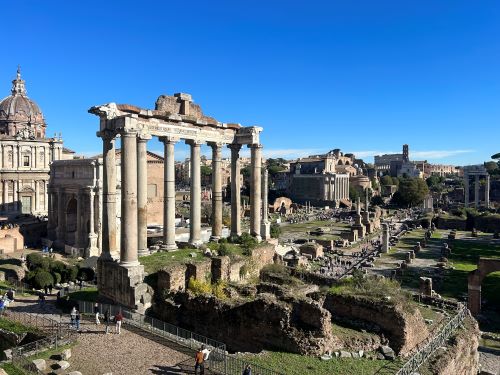
I decided to go to Bilbao in order to experience another unique region of Spain that I had never visited before. In my first year seminar class on unveiling the stereotypes of Spain, we learned a lot about the Basque country region where Bilbao is found and its unique food and culture. When we arrived in Bilbao, my friend and I had the chance to explore the city center and get breakfast before heading to the Guggenheim museum. The Guggenheim museum is a famous modern and contemporary art museum which opened in 1997. Since then, it has brought tourists from all over the world to Bilbao to marvel at its unique collection. I was lucky enough to see a temporary exhibition of some of Picasso’s sculptures and I loved the nontraditional layout of the museum as a whole. The outside of the museum has two other famous art pieces, Puppy, the world’s largest flower sculpture by Jeff Koons (from my home state of Pennsylvania!) and Maman, a massive metal spider by Louise Bourgeois. This was overall a fascinating museum and I highly recommend it if you have the chance to go to Bilbao.
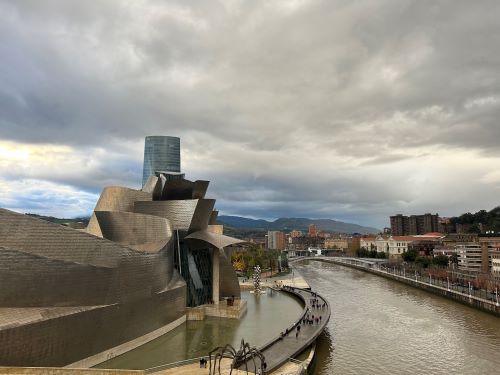
The most striking characteristic of Bilbao was how different it felt from anywhere I have been in Spain. The architecture, street signs, the food and even the way people dress was different. People in the Basque country also speak the Basque language or Euskadi, which was fascinating to see in person on signs and in the airport. Another highlight for me was the Erribera Merkatua or Mercado de la Ribera, Europe’s largest indoor food market. The art deco style building has endless stalls of pintxos, or Basque style tapas, desserts like carolina, the sweet of Bilbao, fish, and produce. It is located in Casco Viejo or the old town of Bilbao. This beautiful and historic section of the city has narrow streets of hidden gems and colorful buildings. Bilbao was a perfect bookend to my travels around Spain and I’m so glad I had the chance to discover the Basque culture for myself.
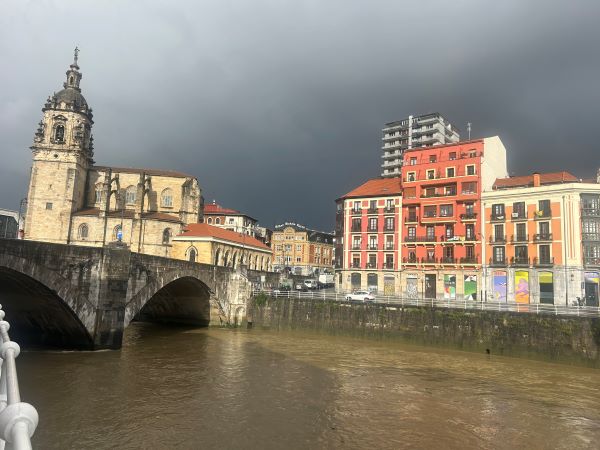
Back to my home for the semester, Christmastime in Madrid is absolutely beautiful. Spain is predominantly a Catholic country, and even though the influence of the religion is not as prominent as it was historically, Christmas is widely celebrated. The Christmas season spans from the majority of the month of December to January 6th when gifts are traditionally given for Epiphany or Three Kings Day. The city had already begun setting up lights as soon as Halloween ended, so I was eagerly awaiting the day when they would finally be turned on. Now, almost every street has beautiful murals of lights that dangle over the streets and each square has a Christmas tree. Many popular squares also have Christmas markets, like Plaza Mayor with a traditional Christmas market and the Corte Inglés Christmas market near the Nuevos Ministerios metro station in the business district. Like I observed in Sevilla last month, these Christmas markets are also dedicated to the tradition of building the family nativity set each year. However, my personal favorite Christmas market is the massive Paseo de Recoletos artisan market. This famous boulevard is lined with endless stalls of artisans selling handcrafted Christmas decorations, jewelry, pottery, leather goods, and so much more. It seems like every corner in Madrid is covered in beautiful Christmas decorations right now, and I absolutely love it.
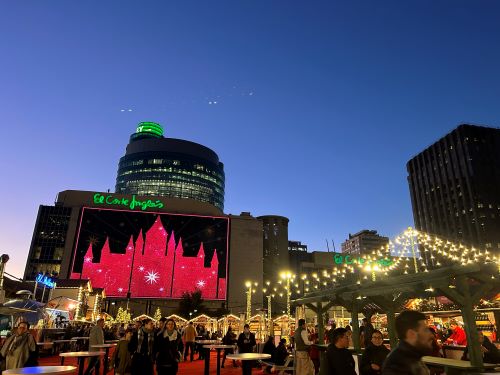
Before I end my blog, I wanted to share some pieces of advice for future students. Firstly, make sure not to pack more than you need and leave lots of space to take things back! Madrid has lots of thrift and vintage stores for shopping and of course you’ll accumulate lots of special souvenirs and gifts to take back to your family and friends with all of your travels. When you are packing and preparing for your time abroad, make sure to pack lots of layers. As the weather gets colder, it’s helpful to have lots of options and also make sure to bring an umbrella! The weather is usually very nice but when it rains in Madrid, it can last for a few days. My most important piece of advice sounds cliché, but seriously take advantage of every moment you have abroad. Make sure to budget ahead for some weekend excursions but also make sure you spend lots of time in Madrid. There are so many amazing neighborhoods each with their own personalities to explore as well as lots of parks, cafes, museums, and other interesting places to spend time at only a metro or bus ride away.
I hope you all have enjoyed following along with my travels and experiences while studying abroad in Madrid this semester! I have absolutely loved this semester and I know I’ll be back in Madrid someday, hopefully with the chance to call this city my home once again. Spain as a whole is such an incredible place and each region, even each city and town has its own unique culture and traditions. I’m so grateful for this experience and I’m so glad I had the chance to share what it has been like to start my college years studying abroad!
BLOG SCHEDULE
September 18, 2023
September 18, 2023: Hello everyone! My name is Hannah Tverberg and I am from Lancaster, Pennsylvania. My major is International Studies and I intend to minor in Spanish. Since I was selected for the Madrid Cornerstone Program last March, it felt like I was constantly counting down the days for my adventure to begin! Now that I am finally here, I cannot wait to share my experiences with you all throughout the semester! So much has happened since my arrival, so here are my highlights of my first few weeks in Spain.
Even before my arrival in Madrid, I was already able to connect with two other people in my cohort. We had the same flight out of Philadelphia, which made the journey much easier. Zoom meeting orientations over the summer also helped me feel more comfortable before my departure. To all the future Madrid Cornerstone students, it is hard to say goodbye to what is familiar in America, but I can assure you that reaching out to the people in your cohort before you leave makes the transition much easier. Plus, the AU Study Abroad and Cornerstone staff are kind and helpful and they will help ease the process as well both before you leave and as you begin your new life in Spain.
I arrived in Spain on the morning of September 3rd. When our plane landed, I was surprised to be greeted with cloudy, rainy skies instead of the warm sun I had experienced when I visited Spain with my high school in June. Rain is not very common in Spain, especially in such large amounts, and in some areas of the city it caused flooding. I spent the rest of the day getting settled and exploring my new neighborhood as much as I could despite the downpour of rain. In the evening, I was able to meet everyone else in my cohort and we all decided to go out for dinner at a pizza restaurant close to our residence building.
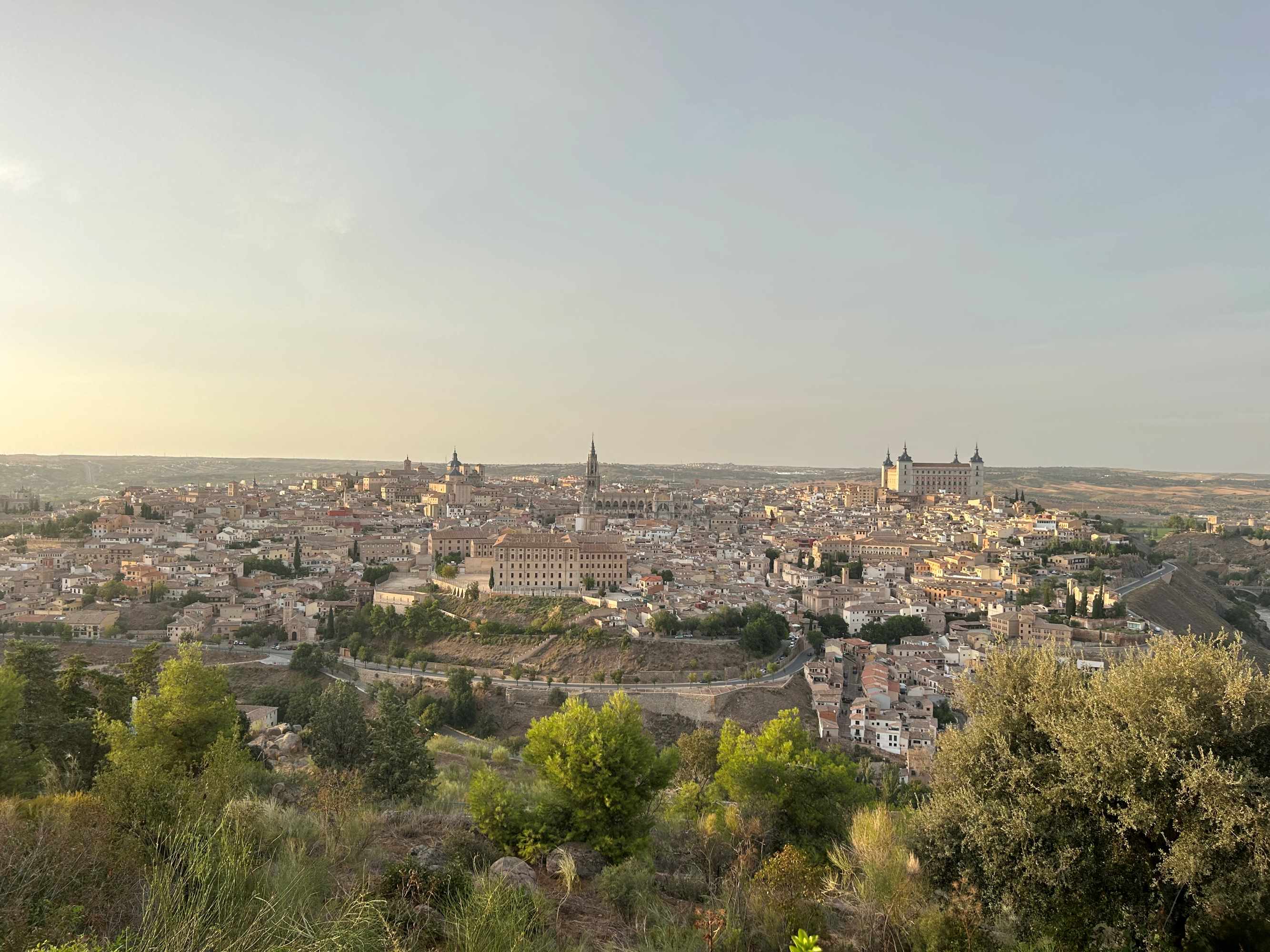
After my first day in Spain, the program picked up very quickly. After our orientation on our second day, we were already off on our first cultural excursion to Toledo. Toledo is a beautiful and very historic city south of Madrid. The city highlights the intersection of Muslim, Christian, and Jewish heritage as the 3 cultures coexisted in Toledo for hundreds of years. We started off our first day there seeing the ancient walls of the city and touring the Mosque of Cristo de la Luz, a small mosque later used as a church built in 999. After we had lunch, we toured the absolutely stunning Catedral Primada de Toledo. The cathedral has so many artistic masterpieces including paintings by El Greco, a famous artist in Spain and El Transparente, a dazzling baroque altarpiece. We finished off our first day in Toledo with dinner together in a local restaurant.
The next day in Toledo, we visited the San Juan de los Reyes Monastery. This monastery was built during the time of King Ferdinand I and Queen Isabella II (the late 1400s-early 1500s). Afterwards, we visited the Synagogue of Santa María La Blanca which was built in the 12th century as our final stop for our Toledo excursion. I was absolutely blown away by the art, culture, and architecture in Toledo, and it was the perfect opening trip for the semester.

After our trip to Toledo, we started classes. Since then, I have begun to get used to my classes and what typical weeks will look like for me during my time in Madrid. I am absolutely loving my classes so far and all my professors are deeply knowledgeable about the subjects they teach. A particular highlight for me has been my Mediterranean art history class, where along with in-class lectures, we explore museums around Madrid to gain a better understanding of the art we are studying. Our first visit was to the Archaeological Museum of Madrid, where we had the chance to see Greek and Roman art and architecture found in Spain. Some of our future visits include visits to the Prado Museum and the Reina Sofía Museum.
Lastly, my weeks also consist of smaller field trips within Madrid. This past week, we had our first “Paseo” or short Tuesday evening walking tour. Our first destination was Retiro Park, a famous green space in Madrid. We had the chance to rent boats on the lake, explore the rose garden, and see the glass palace. We also had our first Friday field trip to Barrio de las Letras, or the neighborhood of the writers. We saw many sites related to Spain’s “golden age” of literature, which took place during the 16th and 17th centuries. These sites included buildings related to Miguel de Cervantes, the author of Don Quixote, and the home of Lope de Vega, a Spanish playwright and poet.
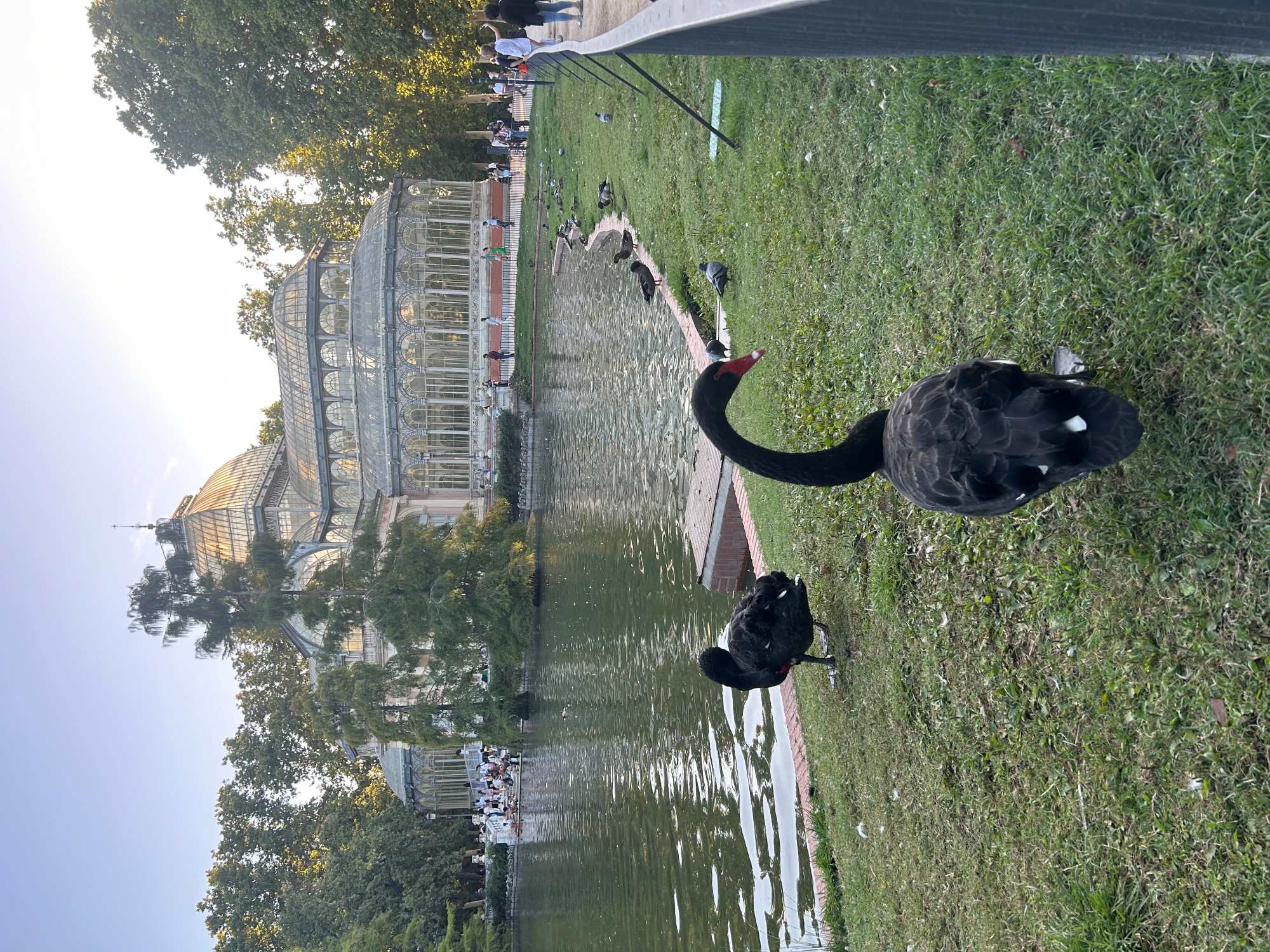
These first few weeks in Spain have been incredible, and I am already learning so much about myself and Spanish culture. I have also made meaningful connections with the other students in my cohort and my professors. Plus, I feel very comfortable exploring Madrid by myself during my downtime as the city is very safe. I hope you enjoyed learning about my life in Spain so far. I cannot wait to share more of my adventures in October!
October 16, 2023
Hello everyone, and welcome to my second blog! The last half of September and the beginnings of October have been packed with lots of interesting trips and activities. However, my personal highlight of the past month was our program trip to Catalonia. We saw many pieces of art and architecture and had the chance to relax in the remote beach town of Cadaqués. It was a very memorable trip with many enthralling sites, and I learned so many interesting facts on my tours that I am very excited to share with all of you!
We traveled to Catalonia by train. This took about 5 hours as we were traveling all the way to Figueres, about 90 miles north of Barcelona. The city is the hometown of Spanish surrealist artist Salvador Dalí. Figueres was not a famous city until Dalí built his museum there in the 1970s. The museum occupies an old theater where Dalí had some of his first expositions as a teenager before he was well known. Dalí’s museum was our first stop of the trip, and it was a great opportunity to have the chance to better understand Dalí’s mind and art. The museum itself is a piece of surrealist art, featuring a full scale apartment that makes up the face of American actress Mae West, Dalí’s personal Cadillac that had a rain apparatus installed inside, and many of his works, especially from his early years. It was a fascinating stop, and definitely a museum that I’ll never forget.
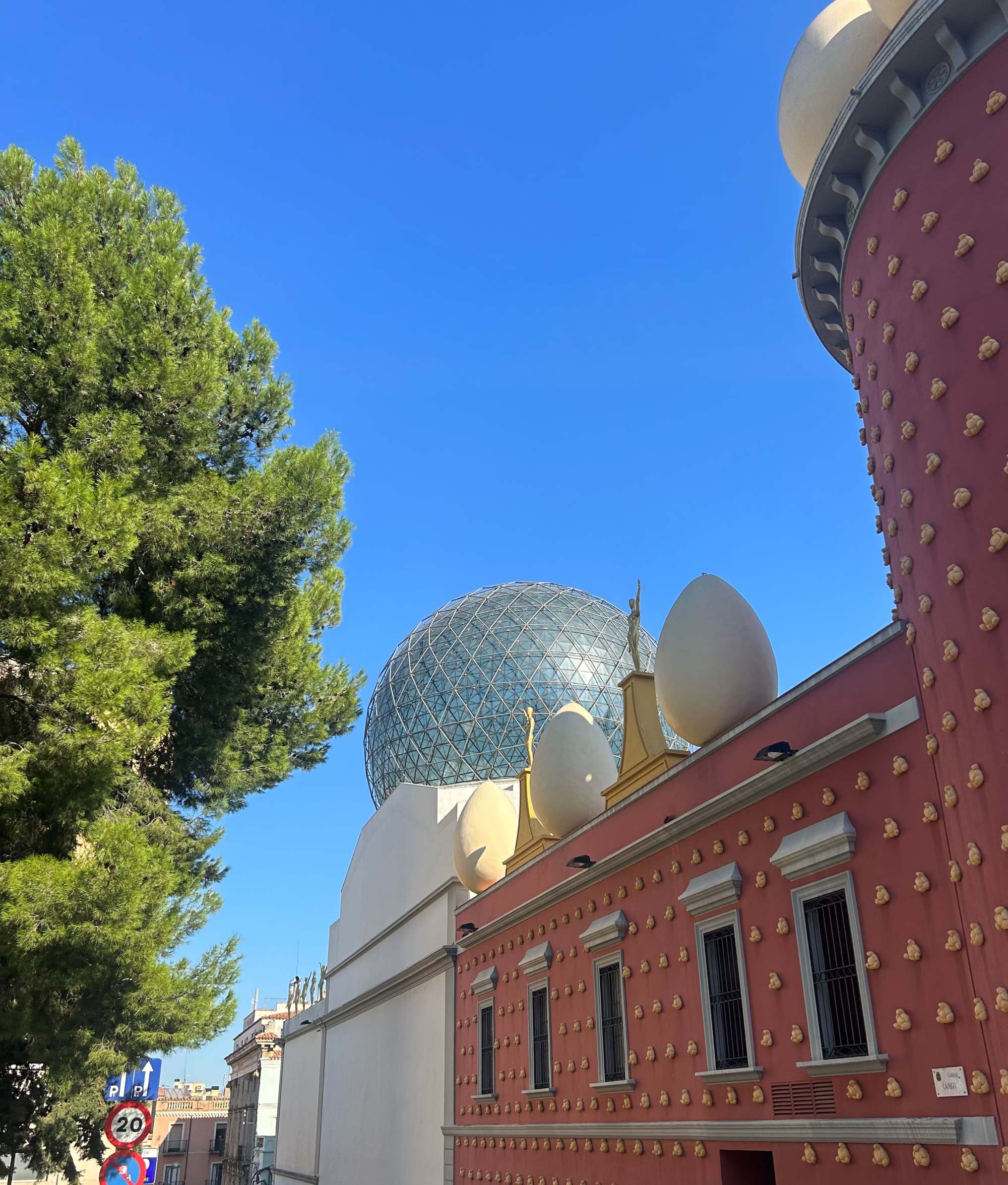
After our stop at the museum, we traveled to Cadaqués, a small beach town about 10 miles south of the French border. This was truly one of my favorite places I’ve ever been. The town had such a calm and relaxing atmosphere, and we had the chance to enjoy swimming in the Mediterranean in the evening before dinner. Cadaqués also served as an inspiration for Dalí in his younger years, which can be seen in his paintings like Port Alguer (c. 1923). The next morning, we traveled south again to the Salvador Dalí House in Portlligat. His house is very similar to his museum in that it uses surrealist elements and decorations to fill the space. It also features a beautiful patio area with stunning views of the sea below. However, it was time to continue traveling soon after our visit down to Barcelona.
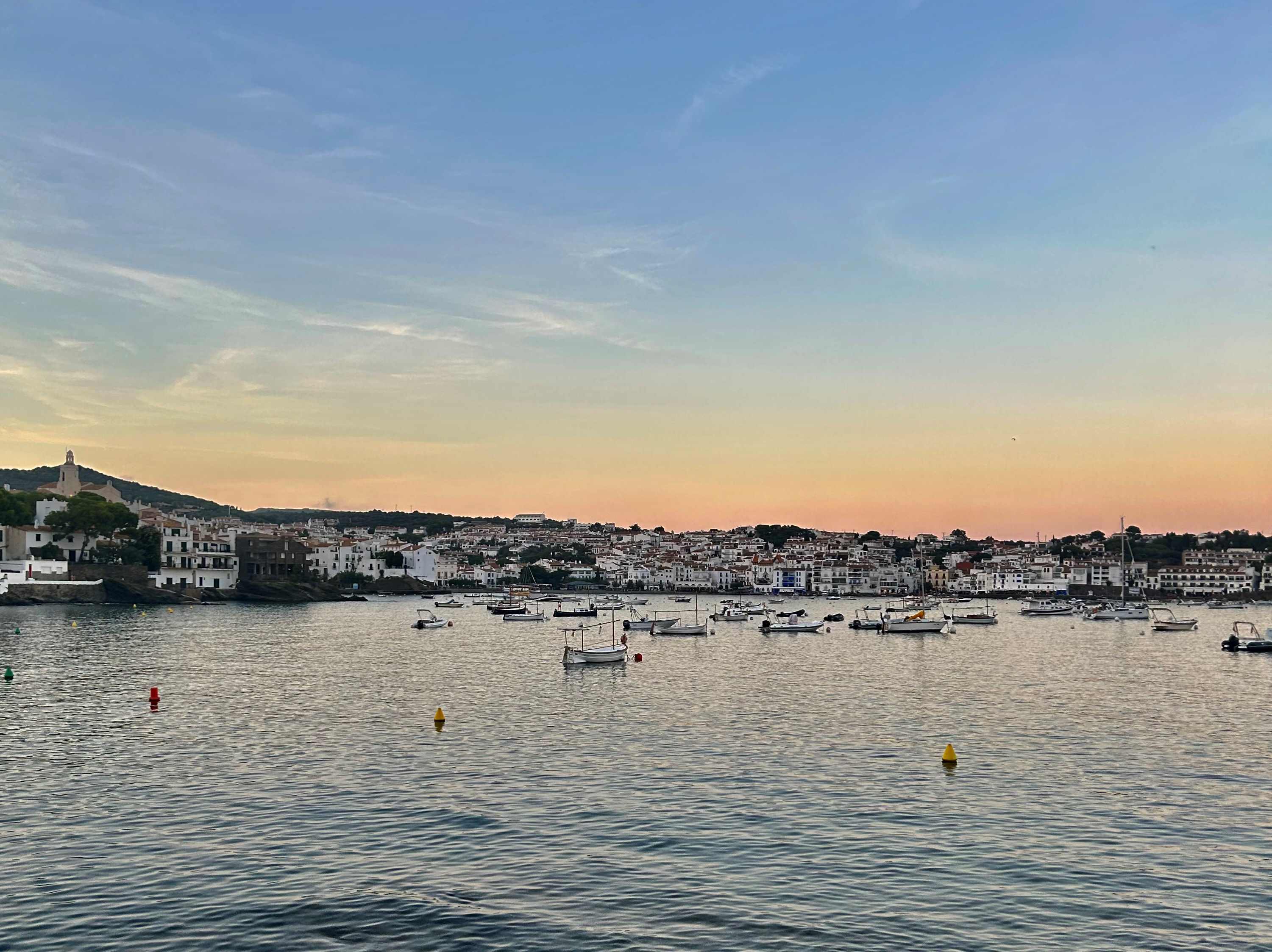
We began our time in Barcelona with a tour of the Barrio Gótico, or Gothic Quarter. It was the Roman part of the city from ancient times. The Romans referred to Barcelona as “Barcino” and were the first group of people to occupy the space where the city now stands. The quarter has narrow and winding streets, contrasting from the very linear and even streets of the rest of the city. The incredible Barcelona Cathedral and Catalonia’s regional government building can both be found here. It also has remains of Roman society, such as an aqueduct that can be seen near the cathedral. The Gothic Quarter is a perfect first stop to visit in Barcelona, as it provides visitors with a historical foundation before visiting the city’s modern masterpieces.
The next morning, we visited the Picasso Museum. As a big fan of Picasso’s art, it was so interesting to have the chance to see some of his early paintings before he found his style of cubism. Cubism is a manner of painting in which the artist uses geometric shapes to include multiple angles of the subject in a single painting. One of my favorite rooms was the room filled with Picasso’s interpretations of Velázquez’s Las Meninas. He copied the painting multiple times in the style of cubism, each one different from the others. I also loved the room filled with various paintings of pigeons which Picasso had a fixation on painting towards the end of his life.
Overall, this museum offers visitors the chance to see Picasso’s evolution in person and like the Dalí museum, it allows visitors to have a glimpse into the artist’s mind.
After the Picasso Museum, we visited Casa Milà, also known as La Pedrera. This structure was constructed in 1912 for a wealthy family in Barcelona by Antoni Gaudí. Gaudí was truly a pioneer in architecture, famous for his modern and intricate designs. Built during the height of Gaudí’s career, Casa Milà is famous for its rooftop reminiscent of sand dunes. What I immediately noticed about the house was that the interior furnishings of the house deeply contrasted the exterior. While the apartments look old and outdated to our current standards, the outside looks futuristic and almost extraterrestrial with its wavy façade and curving rooftop. It is a testament to how innovative and ahead of his time Gaudí was, and this style can be seen in his other masterpieces like Parque Guëll.
In the afternoon we had free time, so I decided to visit Casa Vicens, the first house Gaudí was commissioned to design. As an avid fan of Gaudí’s architecture, this house has been on my bucket list since I first learned about it. The outside is a lot different from his later works, looking much more geometric and blocky. I noticed that the inside also has a different appearance, having influences reminiscent of The Alhambra (a spectacular Moorish palace) in Granada while also demonstrating the beginning of Gaudí’s fascination with nature. Lots of flowers and plants can be seen in the designs around the home, including ceramic planters with sunflowers on the balconies. This house is definitely a hidden gem in Barcelona, and I would recommend it to anyone interested in looking deeper into the roots of Gaudí’s architectural style and influences.
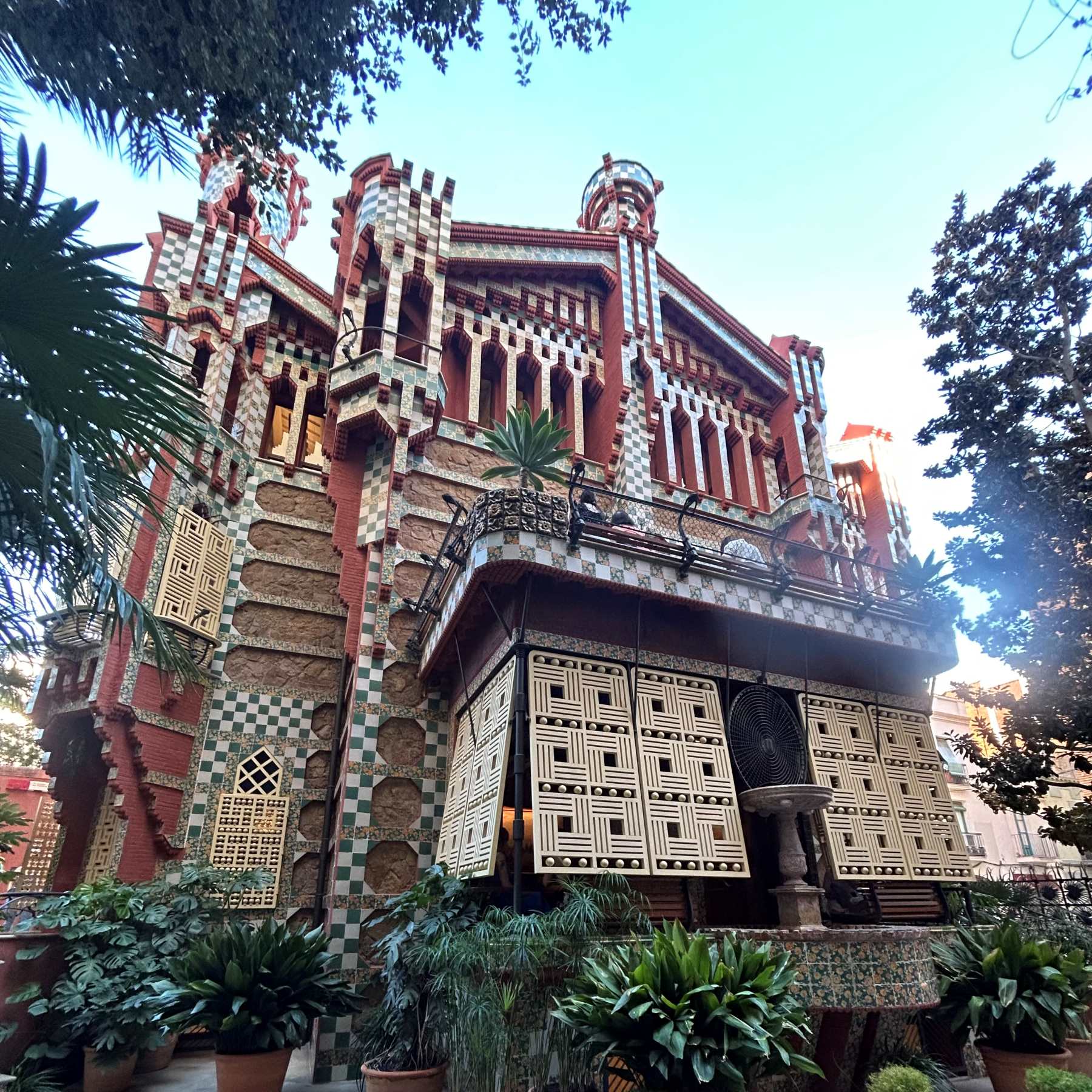
In the morning of our final day in Barcelona, we visited the city’s crown jewels of Parque Guëll and La Sagrada Familia. We began with Parque Guëll, a project that Gaudí created with the purpose of being a retreat for wealthy families outside of Barcelona’s city center. Unfortunately, the neighborhood never gained much popularity because it was too far outside of where everything was taking place in the city. However, it became very popular as a park later on and is now a must see stop for tourists. A highlight is the mosaic bench that overlooks the two main structures of the park, small houses that are also elaborately decorated with colorful mosaics.
Afterwards, we visited the absolutely stunning La Sagrada Familia cathedral. While the cathedral has been under construction for around 140 years, it is supposed to be finished in 2026. It is a captivating structure that one could stare at for hours. The two completed façades show the birth and death of Jesus, while a third that is currently under construction will show the resurrection. We also had the chance to tour the inside of the cathedral, which is also an inexplicably beautiful and dazzling masterpiece. Stained glass windows paint the walls with a rainbow of watercolor, and columns that look like trees stretch all the way to the ceiling support the whole structure. It was the perfect last stop for our tour of Catalonia, and I hope to return so I can see the completed cathedral someday.
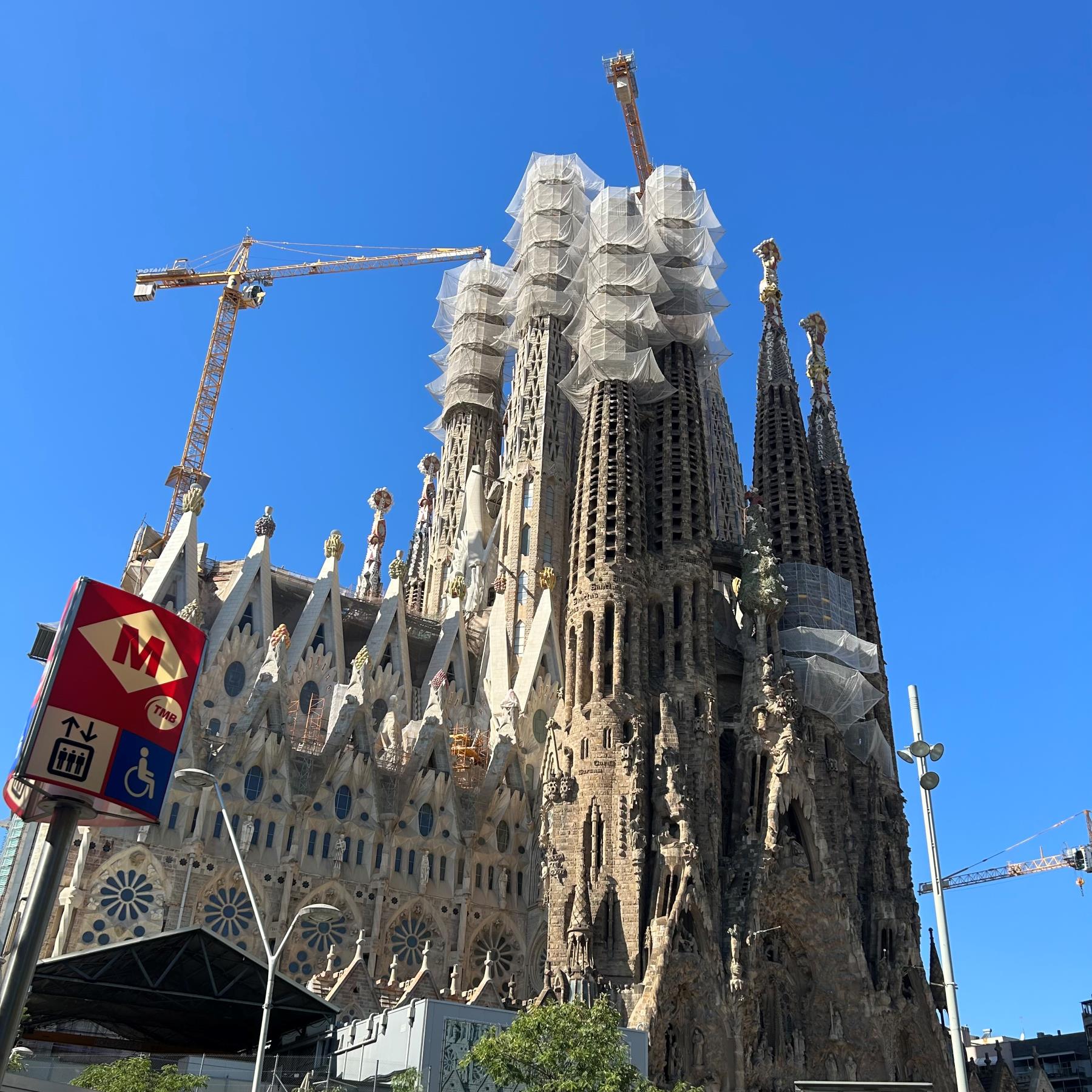
I hope you enjoyed learning about my trip to Catalonia and hearing about all of the fascinating art and architecture we saw! I had an incredible time learning more about Dalí, Picasso, and Gaudí and their masterpieces. I’m looking forward to sharing more of my experiences in November!
November 13, 2023
Hannah Tverberg
November 13, 2023:
Welcome to my third blog! This month I made so many special memories and went on some amazing trips, so I’m going to jump right into what I’ve been up to. At the end of October, we visited a city near Madrid named Segovia. Segovia is famous for its incredible Roman aqueduct, castle, Romanesque church, and stunning cathedral. I loved seeing each of these sites, and it was so interesting to see how the city spans so many ages of history from the Roman empire to Spain’s medieval period. I also found it amazing to see a Romanesque church in person as this architecture style was used mostly in the 11th century. I was then able to compare it to Segovia’s gothic cathedral (although it has some newer influences on the interior), a style that came later on. One of my favorite parts of this program is how the classes mix with our trips, and I’ve found this especially true for my Mediterranean art history class. It truly enriches the material learned in class and puts it into a real world context, for example being able to analyze the churches you visit.
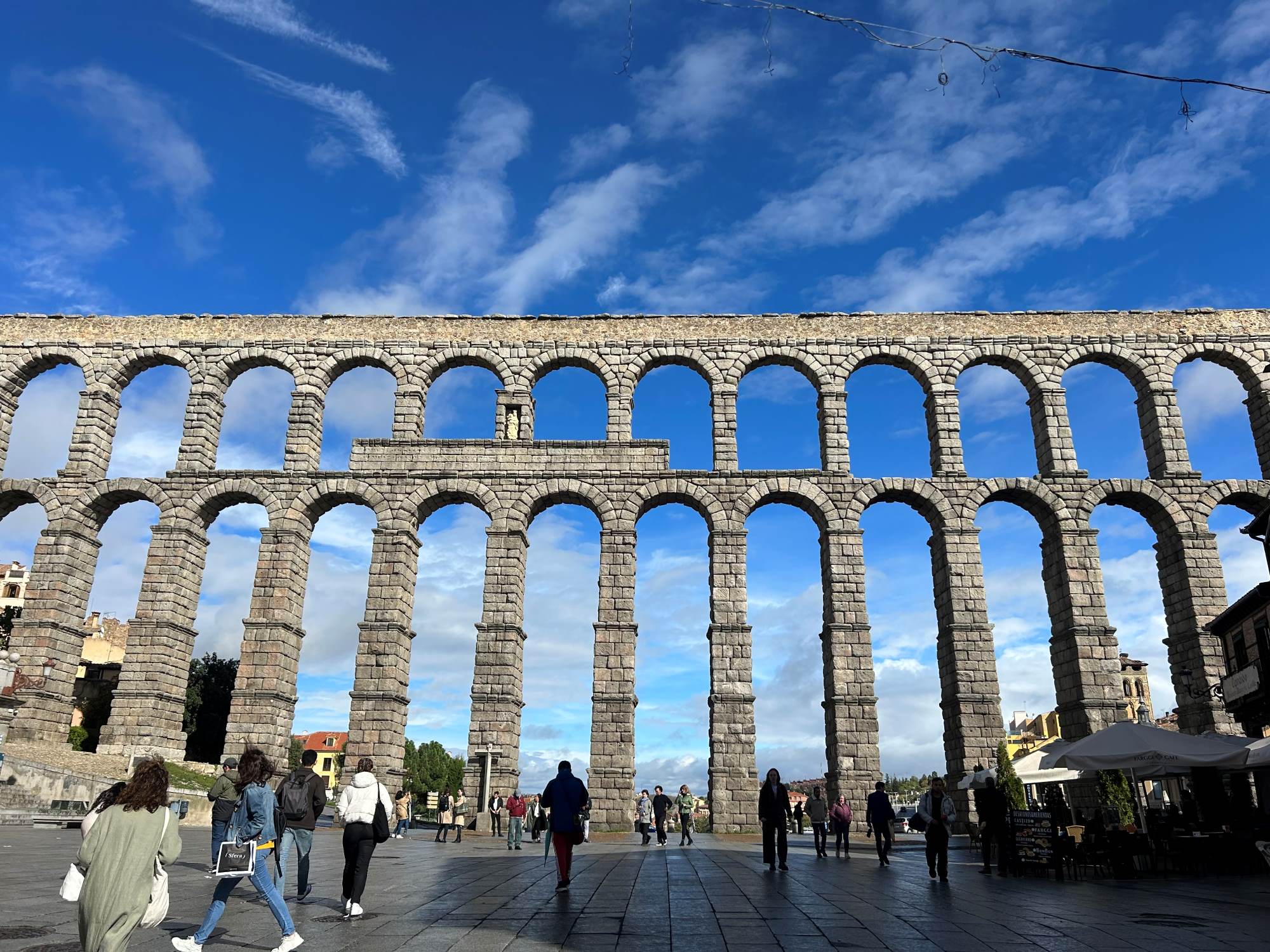
Another highlight this month was my trip to Lisbon with my fellow ambassador, Elizabeth. We had so much fun exploring the city and packed a lot into the weekend. We began our weekend with a guided tour of the city and our guide explained Lisbon’s history. An earthquake in 1755 deeply affected the city, destroying a lot of its older sections. Effects of the earthquake can still be seen today, for example in one of the old cathedrals whose ruins were transformed into the archaeological museum. We also learned about an architectural style called Manueline, named for King Manuel I, king of Portugal from 1495-1521. This style brings detailed and elaborate designs and influences from the city together and can be seen in sites around the city including the Jerónimos Monastery and the Belém tower. Thankfully, these masterpieces survived the earthquake and Elizabeth and I were able to see these beautiful buildings during our stay.
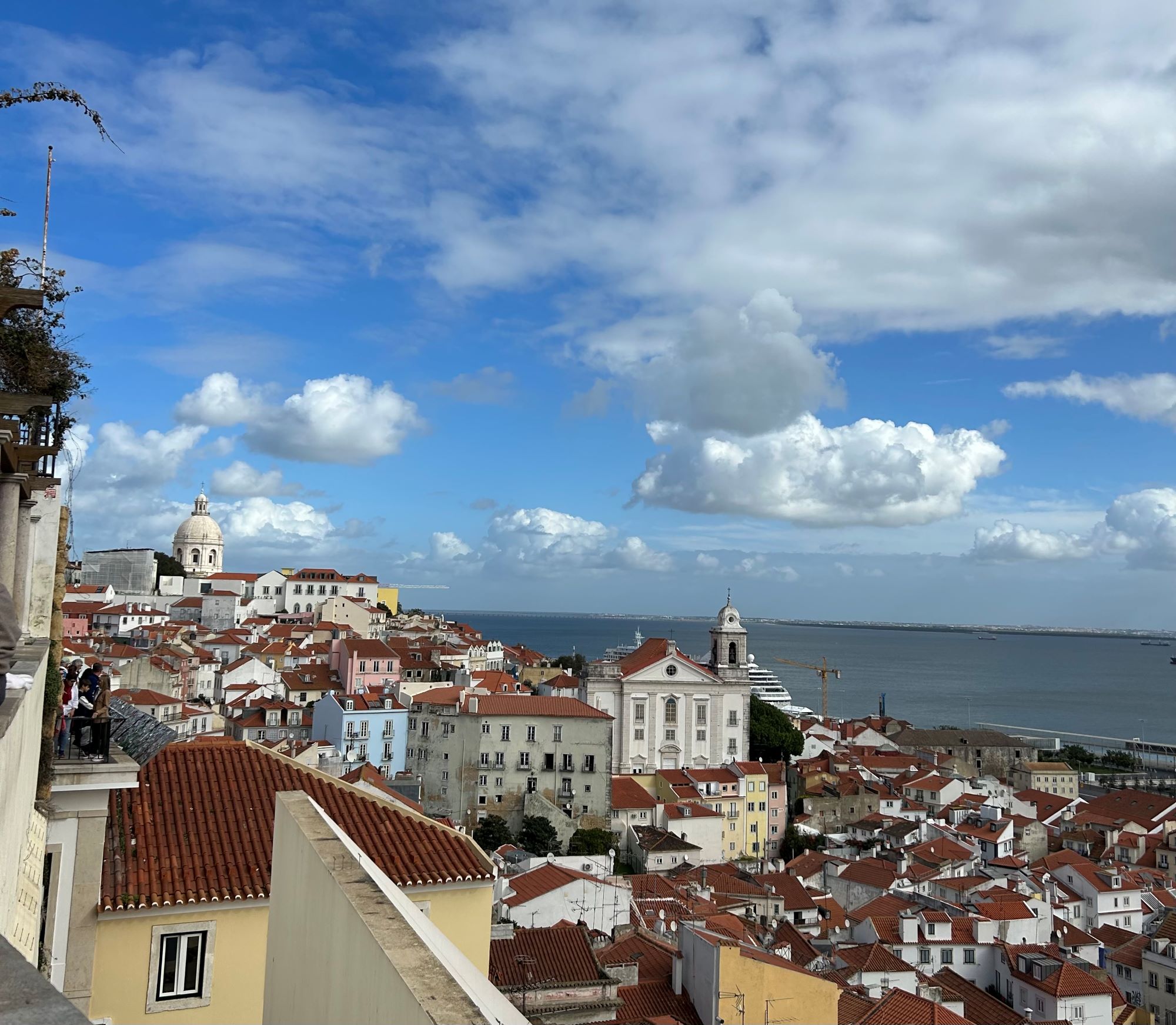
Lisbon also had amazing food, our favorite being pastéis de nata. These pastries are egg custard tarts dusted with cinnamon and powdered sugar. They have quickly become one of my favorite treats and I miss them already! We also checked out Lisbon’s Time Out Market, which I would recommend to anyone visiting the city. It has a lot of authentic Portuguese flavors and restaurants to suit anyone’s preference. The cuisine is definitely different from Madrid as there are a lot more seafood dishes. The buildings are also super colorful, and the terrain is very hilly. It is definitely a trek to get to some of the best viewpoints, but super worth it! Plus, a nice breeze from the sea keeps the city at a nice temperature in the fall. I would definitely recommend Lisbon if you study abroad in Madrid! It is an easy and beautiful weekend getaway.
If you followed along with my Instagram takeover, you would know that our program also went to Andalusia the weekend before this blog was posted! Andalusia is a beautiful region in the south of Spain. We began our journey with a stop in Consuegra, a small town famous for its windmills. These windmills are famous because they appeared in an episode of Don Quixote, and they were used to grind wheat into flour for the town in the past. After, we headed further south to Cordoba. Cordoba is home to a very famous mosque, built in the 10th century. However, during the Catholic reconquest of Spain, a cathedral was built in the middle of the mosque and a bell tower was built over the minaret. It is an interesting mix of architecture to see in person, and a very interesting piece of Spanish history. We ended the evening going to a Spanish olive oil manufacturer on the outskirts of Sevilla called Basilippo. We learned about the process of making olive oil and had a tasting as well! My personal favorite was an orange infused olive oil paired with chocolate ice cream, an unexpected but delicious pairing.
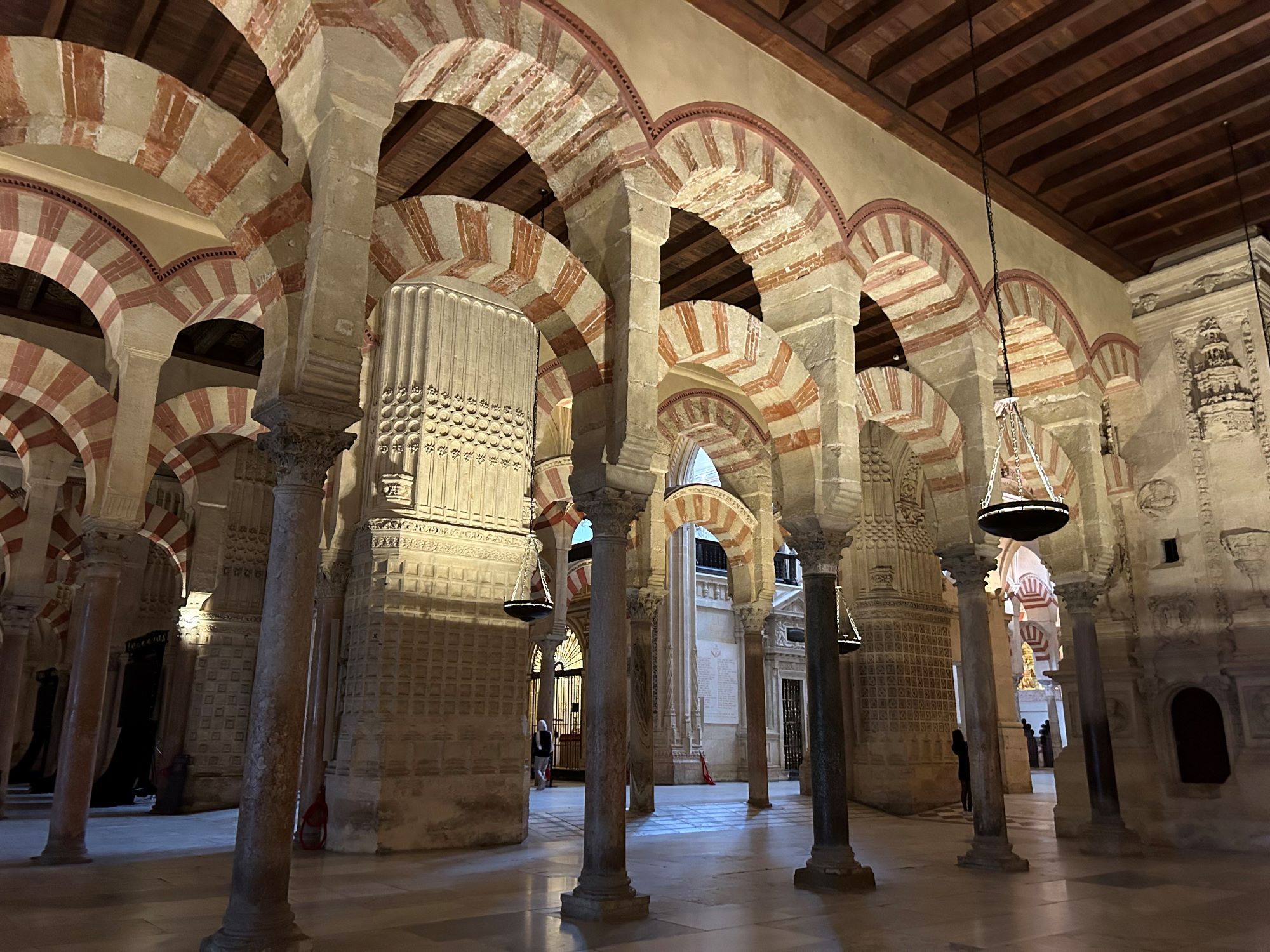
We spent the next day in one of my favorite cities in Spain, Sevilla. I visited Spain last June and quickly fell in love with this special city. To begin the day, we visited the Alcazar of Sevilla. This is a stunning palace that was built by Muslims for Spaniards. This can be discovered in the calligraphy found throughout the palace, which is in Spanish instead of Arabic. I loved all of the colors and intricate details found in the plaster of the walls. The Muslim architects of this palace were true geniuses, as they mixed plaster with marble dust to create a material that has stood the test of time and the elements. We also explored the royal gardens where we saw peacocks! After the palace, we toured the Sevilla Cathedral- but in a way few people ever get to see it- on the roof! This rooftop tour was absolutely incredible. As you can tell, I’m a huge fan of analyzing architecture and this tour provided valuable insights into how the architects constructed this cathedral. The views were also perfect, we could see far out to the landscape surrounding the city. After seeing the cathedral from the ground last time I was in Spain, it was so interesting to gain a new perspective into the largest Gothic cathedral in the world.
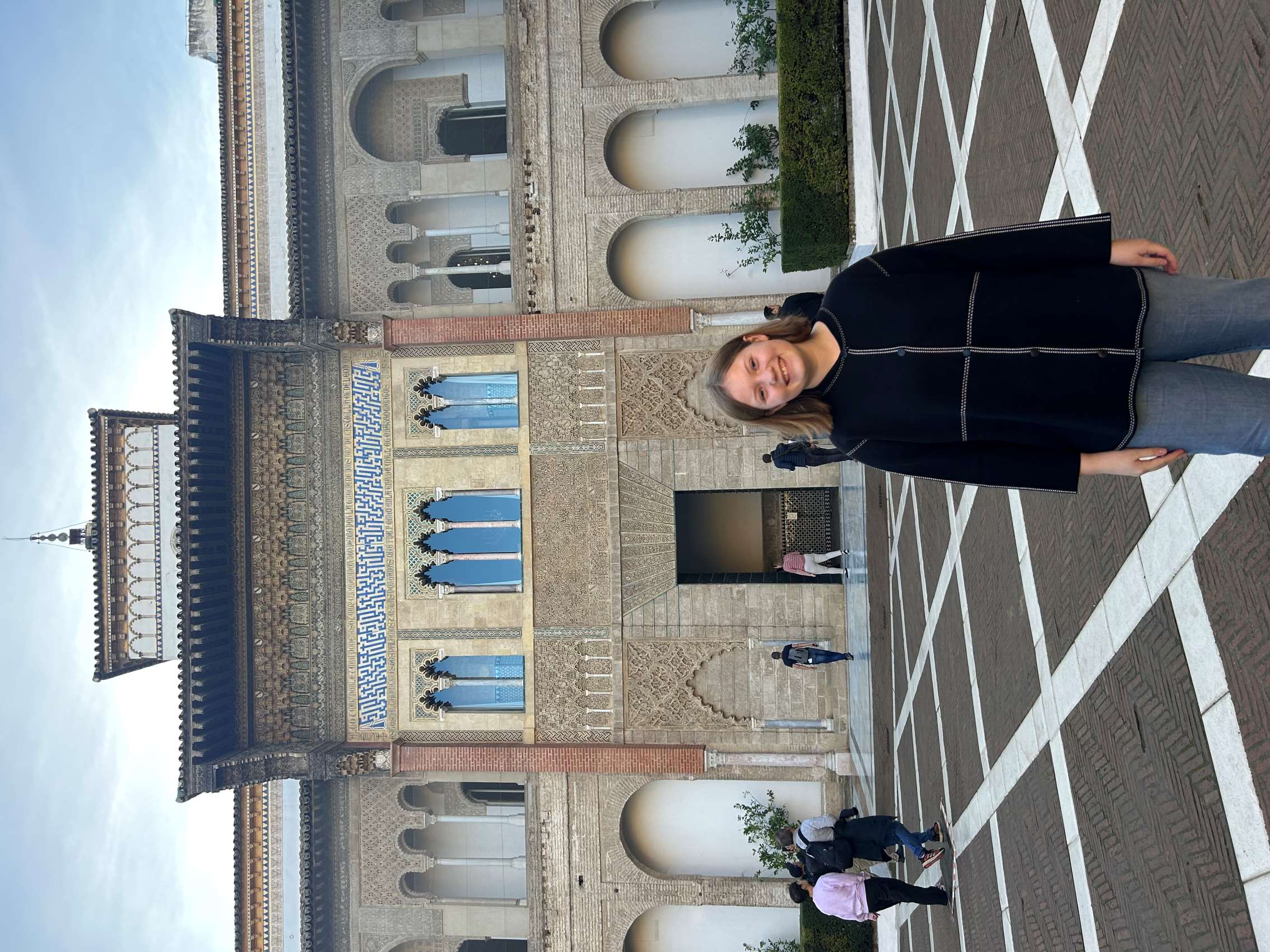
In the afternoon, we had free time so I decided to walk to the Maria Luisa park to explore. This park has lots of water features and interesting buildings to see, like the Plaza de America. It was built as part of the Ibero-American exhibition of 1929, and the buildings today house an art museum and an archaeological museum. I also walked by the river to see the Torre del Oro, a military watchtower built in the 13th century. Later, I went to an artisan market as well where I got to see lots of art pieces made in Sevilla. Plus, Sevilla was already getting ready for Christmas and their Christmas markets were open! I learned that the Christmas markets are usually dedicated to a Spanish tradition of collecting a new piece for their nativity set each year. There are so many beautiful handmade pieces you can see if you explore the market, and I’m looking forward to going to Madrid’s Christmas market at the end of November and into December. We ended the evening with a flamenco show, which was amazing because we had front row seats!
We began our third day of the trip visiting the Plaza de España. Just like the Plaza de America, the Plaza de España was built for the Ibero-America exhibition of 1929. However, the Plaza de España is the most grand and beautiful building built for the exhibition. It has small alcoves for each province of Spain and beautiful tiles to decorate each one. Next, we headed to another one of my favorite cities, Granada! In the afternoon of our arrival, we toured the spectacular Alhambra. The Alhambra is a Muslim palace and city that was built in around the 13th century nestled in the mountains above the city of Granada. In 1492 after the reconquest of Granada, it became a Christian court used by King Ferdinand II and Queen Isabella I. The delicate architecture is incredibly well preserved, and has similar techniques to the details of the Alcazar of Sevilla. We were lucky enough to tour the Alhambra at sunset which made for some incredible photos. Beside the Alhambra is the gardens of Generalife or the summer palace, which is equally beautiful and offers views of Granada down below. I think this was a favorite stop for a lot of people in my group, and in my opinion it is the best historical site in Spain. Lastly, we had a delicious group dinner at a Moroccan restaurant in the heart of the city where we had an array of dips with pita bread, lemon chicken, and baklava with tea for dessert.
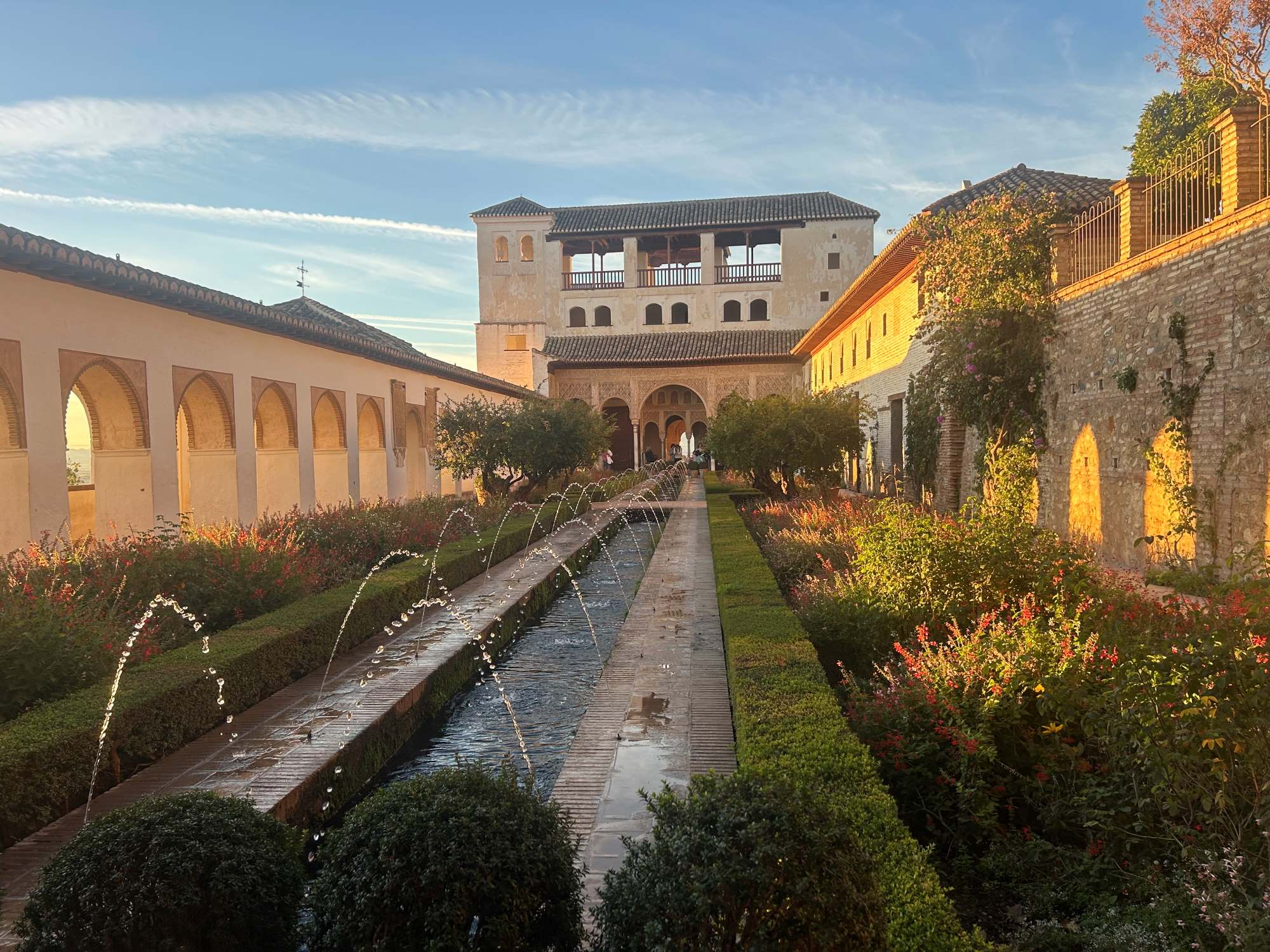
We finished our tour of Granada by walking around the city and seeing some other sites including the Royal Chapel of Granada where King Ferdinand II and Queen Isabella I are buried. We also saw a market that was built over the site of the old bazaar of Granada and many of the main squares. Unfortunately, it was soon time to head back to Madrid afterwards. I had so much fun in Andalusia and learned a lot about the rich history of this region!
This was certainly a travel packed month and I really enjoyed seeing different areas of Spain and Portugal as well. It is so interesting to see each city’s unique culture and charm while visiting Spain! I can’t believe that it is already November, but I’m looking forward to learning more about Christmas in Spain and savoring every moment I have left in this incredible country!
